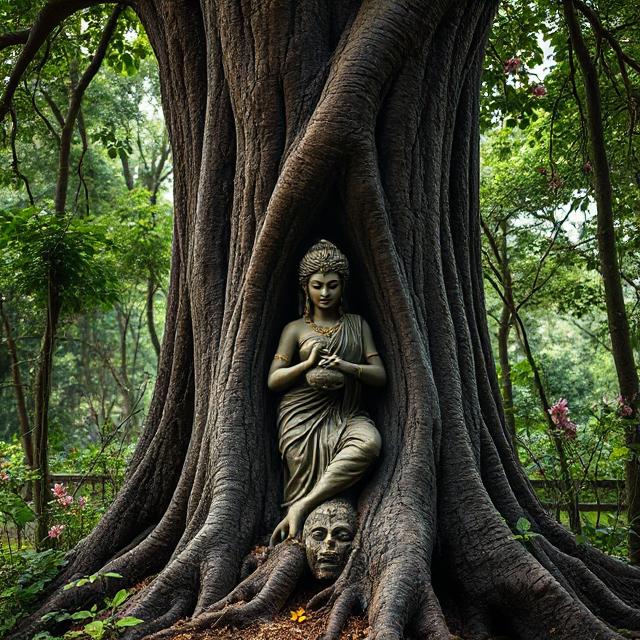
When we think about Ayurveda, most people focus on medicines, herbs, and therapies. But Ayurveda is much more than that — it’s a living science deeply connected with climate, environment, culture, and mental architecture. From my observations and experiences, the regional differences in Ayurveda reflect not only the herbs and therapies but also the climatic and subtle energetic needs of the people.
The Southern Indian Ayurvedic Influence
Southern India, especially Kerala, has a tropical, humid climate, which naturally shapes the body, mind, and subtle energies of its people.
Kapha and Vata Dominance: The humidity and heat tend to create heavier bodies and emotional layering, making people more sentimental and relationally dense.
Ayurvedic Response: Traditional Kerala-style therapies, like oil-based massages, Kizhi powders, and Panchakarma, evolved to counter this natural heaviness.
Generational Effect: Over generations, bodies and minds have adapted to the dense environment, developing emotional resilience but also accumulating heavier psychic layers.
In short, southern Ayurveda is designed to handle dense emotions and bodily heaviness, providing grounding therapies that align with climate and constitution.
The Himalayan / North Indian Ayurvedic Influence
Contrast this with the Himalayan regions, like Rishikesh:
Climate: Cooler, drier air with flowing rivers and pranic currents creates a lighter physical and mental environment.
Subtle Effect: Even without conscious meditation, the nervous system and pranic currents flow more freely, naturally easing mental density.
Therapies: Herbal decoctions, mild detoxification, preventive care, and yoga-based alignment are enough for maintaining health.
Here, Ayurveda is lighter, preventive, and integrates with the environment itself. People here don’t require heavy oil-based therapies because nature provides much of the balancing effect.

Climate as Half the Therapy
From my perspective, moving to a different environment is itself therapeutic:
Simply being in Rishikesh’s Himalayan climate can relieve half of the physical and mental heaviness for someone from South India.
Remaining imbalance is addressed by medicines, therapies, and yoga practices.
Ayurveda + Environment Synergy: Traditional medicines handle the specific body imbalances, while climate, air, water, and natural rhythms provide subtle, continuous healing.
Mental Architecture and Cultural Adaptation
Moving from a southern, dense, relational culture to the Himalayan environment can gradually shift mental architecture:
Heavy sentimental minds can become cooler, lighter, and more spacious over time.
Initially, some may feel a sense of emptiness or unfamiliar calm, because their mind is adapted to relational and emotional density.
Over months, mental clarity and subtle energy alignment develop naturally, supporting the body-mind integration promoted by Ayurveda.
The key: adaptation works best when mental layers are already partially clear — environment alone cannot do everything.

Integrating Southern and Himalayan Ayurveda
For someone from South India, like a Kapha-Vata constitution:
Continue Southern Medicines: Keep using Kerala/Kottakkal Ayurveda for physical balance and hormonal support.
Leverage Himalayan Environment: Use Rishikesh’s climate, water, air, and subtle pranic energy as a natural healing support.
Gradual Therapy Integration: Slowly integrate lighter northern Ayurvedic therapies (like Patanjali-style preventive and lifestyle-oriented practices) as the body-mind adapts.
Conclusion: Awareness Beyond the Body
Ayurveda is not just about medicine — it’s a subtle science that integrates climate, genetics, culture, and mind architecture. Moving from a southern heavy environment to a lighter Himalayan one can:
Lighten emotional and psychic layers.
Support gradual integration of northern preventive Ayurvedic practices.
Combine medicine, therapy, and environment for holistic transformation.
Here are some useful article links. You can read them below:
- Learning vs Earning – Kalyanstheri
- Prakriti of the Body: Can Ayurvedic Prakriti Be Switched to Another? (Maybe)
- Learning vs Earning – Kalyanstheri
Disclaimer:
The content presented on this blog represents my personal opinions and experiences. It is based on my listening to the inward sound (Omkaranadam), my personal vision, and my forward intuition. While the ideas shared are deeply meaningful to me, they are not random statements, nor should they be interpreted as verdicts, prescriptions, or advice for anyone.
This content is meant purely for personal reflection, discussion, or exploration of philosophical and spiritual ideas. Readers may choose to engage with it as a discussion about consciousness, God, or spiritual exploration, or simply as a creative and thought-provoking experience.
I do not claim any authority, and no part of this content is intended to insult, offend, or challenge any religion, belief, or individual. It is a humble sharing of my journey and insights with the wider universe of readers and seekers.

